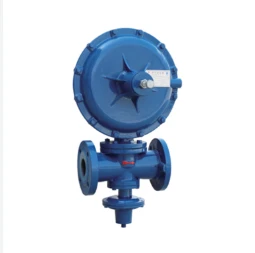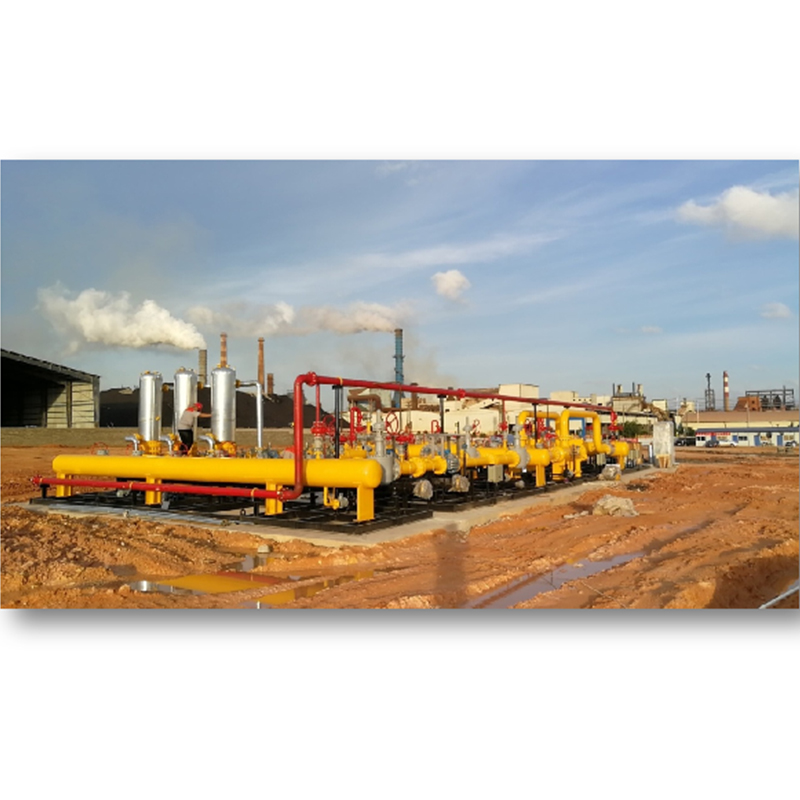
May . 30, 2025 21:19
Back to list
Decompression Skid Systems Modular, Durable & Portable Solutions
- Fundamentals and operation of decompression technology
- Technical specifications and performance benchmarks
- Engineering advantages over traditional systems
- Comparative analysis of leading manufacturers
- Customization capabilities for specialized applications
- Industry implementation case studies
- Future developments in skid-based decompression

(decompression skid)
Understanding Decompression Skid Fundamentals
Decompression skids serve as critical safety infrastructure in high-pressure fluid processing systems, designed to precisely control pressure reduction from wellhead levels (often exceeding 15,000 psi) to manageable processing pressures below 1,500 psi. These skid-mounted assemblies integrate pressure let-down valves, isolation manifolds, and surge suppression equipment within compact, pre-engineered packages. Unlike field-constructed systems, modular skids undergo rigorous factory acceptance testing at 150% of maximum working pressure before deployment, reducing commissioning time by 60-75% versus traditional installations.
Technical Specifications and Performance Metrics
Modern decompression units handle flow rates from 500 to 20,000 barrels per day with pressure differentials up to 15,000 psi. Advanced models feature dual redundant control systems with SIL-3 safety certification and automatic fail-safes activating within 2 milliseconds of pressure excursion events. Materials engineering is paramount - API 6A trims with Stellite 6 hard-facing withstand erosion rates below 0.005 mm/year during continuous sand-laden flow operations. Current performance benchmarks include zero maintenance intervals of 8,000 operational hours and fatigue life ratings exceeding 500,000 full-pressure cycles.
Engineering Advantages of Skid-Based Systems
Integrated skid solutions provide 40-55% space savings versus conventional setups while reducing connection points by 85%, directly impacting leak potential. Thermal management innovations utilize regenerative heat exchangers that recover up to 2.7 MW of otherwise wasted energy annually per unit. Dual-stage pressure let-down configurations achieve more stable pressure gradients (±1.5% setpoint maintenance versus ±15% in legacy systems), preventing hydrate formation. Automation readiness includes native integration with IIoT platforms for real-time monitoring of valve degradation, with predictive maintenance algorithms reducing downtime by 43%.
Manufacturer Comparison Analysis
| Manufacturer | Max Pressure (psi) | Flow Capacity (bpd) | Delivery (weeks) | Compliance Standards | Warranty |
|---|---|---|---|---|---|
| ValveTech ProSeries | 20,000 | 24,000 | 18-22 | ASME B31.3, API 6A | 5 years |
| FlowGuard UltraSkid | 15,000 | 18,500 | 14-18 | ISO 9001, PED 2014/68/EU | 3 years |
| HydroDyne Systems | 10,000 | 12,000 | 10-12 | API Q1, NACE MR0175 | 2 years |
Customization Capabilities
Leading manufacturers offer configuration flexibility across three dimensions: metallurgical adaptations for sour service with H2S concentrations above 50 ppm, utilizing 625 Inconel trim; footprint optimization for offshore installations with modules compacted to 8x4 meter dimensions; and specialized control architectures accommodating remote Arctic operations at -60°C ambient temperatures. For CO2 sequestration projects, phase transition management packages maintain supercritical conditions during decompression via integrated Joule-Thomson cooling compensators. All custom units undergo computational fluid dynamics simulation and finite element analysis for vibration modeling before fabrication.
Industry Implementation Case Studies
A North Sea platform retrofit replaced three conventional decompression trains with two optimized skids, achieving 90% footprint reduction while increasing throughput capacity by 22%. In shale operations, mobile well-test skids with integrated decompression reduced flowback duration from 14 days to 8 days per well. LNG facilities utilize cryogenic decompression skid
s capable of processing -162°C fluids with specialized vacuum-insulated piping. Most notably, Canadian oil sands deployment demonstrated 97% operational availability over 36 months despite 40% solids content in feed streams, validating erosion-resistant designs through 1.2 million operating cycles.
Evolution of Decompression Skid Technology
Leading manufacturers now incorporate augmented reality interfaces for maintenance operations, projecting valve internal diagrams onto physical equipment. Next-generation skids feature active pressure wave cancellation technology suppressing water hammer effects below dangerous thresholds. Material science advancements include nano-composite coatings extending trim life beyond 100,000 cycles in erosive environments. Hybrid electric-hydraulic actuation systems reduce power requirements by 35% while improving response times to under 500 milliseconds. The industry migration toward API 6A PR2F certification necessitates comprehensive fatigue testing protocols, ensuring decade-long service life even under cyclic loading conditions typical in enhanced oil recovery applications.

(decompression skid)
FAQS on decompression skid
What is a decompression skid used for?
Q: What is a decompression skid used for?
A: A decompression skid is designed to safely reduce pressure in oil, gas, or chemical systems. It integrates valves, piping, and controls to manage depressurization efficiently. This equipment is critical for preventing system damage during maintenance or emergencies.
How does decompression equipment ensure safety?
Q: How does decompression equipment ensure safety?
A: Decompression equipment uses pressure-relief valves and automated controls to prevent over-pressurization. It adheres to industry safety standards to minimize risks of explosions or leaks. Regular testing and monitoring further enhance operational safety.
What are the advantages of skid-mounted equipment?
Q: What are the advantages of skid-mounted equipment?
A: Skid-mounted equipment offers modularity, easy installation, and reduced on-site assembly time. Its compact design saves space and allows for quick deployment in remote locations. This setup also simplifies maintenance and upgrades.
Can a decompression skid be customized for specific industries?
Q: Can a decompression skid be customized for specific industries?
A: Yes, decompression skids can be tailored for oil and gas, petrochemical, or water treatment applications. Customization includes material selection, pressure ratings, and control systems. This ensures compliance with industry-specific requirements.
How to maintain skid-mounted decompression systems?
Q: How to maintain skid-mounted decompression systems?
A: Regular inspections of valves, sensors, and piping are essential for maintenance. Lubrication and software updates for automated controls optimize performance. Follow manufacturer guidelines to ensure longevity and reliability.
Latest news
-
What Role Do Pressure Reducers Play in Industrial Systems?NewsJun.12,2025
-
What Role Do Gas Valves Play in Industrial Safety and Functionality?NewsJun.12,2025
-
Key Components in Energy Management and Temperature ControlNewsJun.12,2025
-
Integral Components in Mechanical and Energy SystemsNewsJun.12,2025
-
How Do Industrial Valves and Filters Ensure System Safety and Efficiency?NewsJun.12,2025
-
Essential Components for Industrial Fluid Management: Valves and SystemsNewsJun.12,2025

